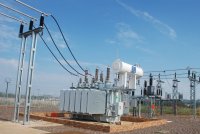To meet the challenge of hosting one of the most important sports events of the world, something unheard of in the continent, South Africa had to overcome infrastructural limitations. The biggest challenge of all was the transmission and distribution of electrical power.
Eskom has consistently made significant investments to modernize the system and increase generation capacity and has counted on WEG solutions since 2006. Plans became more ambitious with the news that the country would host the FIFA World Cup 2010. In 2009, the state owned company purchased 67 WEG High Efficiency Transformers to be able to provide for the demand generated by the World Cup, especially as the event takes place in winter when the power demand usually surges in the country. The anti-corrosion coating applied on the transformers supplied to Eskom was developed by WEG Tintas. This extra protection allows the equipment to be installed all over South Africa under the most diverse climate conditions. Some of the transformers were installed in host cities such as Durban, Capetown and Johannesburg.
The supply to Eskom started the exportation process of WEG transformers to South Africa in 2005. Since then, more than 200 transformers of up to 100 MVA have been sold to the company. Besides providing for the World Cup, many of the transformers were used to reach the target of the “Electricity to all” project which takes electricity to millions of families and replaces kerosene lamps with light bulbs.
In May 2010, WEG announced the acquisition of its long time partner in South Africa: the Zest Group. A leader in distribution of electric motors in the country, the Zest Group also owns companies specialized in the assembly of industrial electric panels, the integration of products to mount generator sets and services in electric power commissioning. With this acquisition, the “World Cup host country” became WEG’s 24th international subsidiary.
"The deadline to deliver this project to the World Cup authorities was extremely tight”, says Gary Daines, Project Director at Zest Electric Motors, “but we managed to deliver thanks to the recent increase in production capacity in Brazil”, he adds. Daines explains that they also needed to subcontract local companies to help with the installation processes and that the professional staff involved were trained and qualified at WEG in Brazil.




